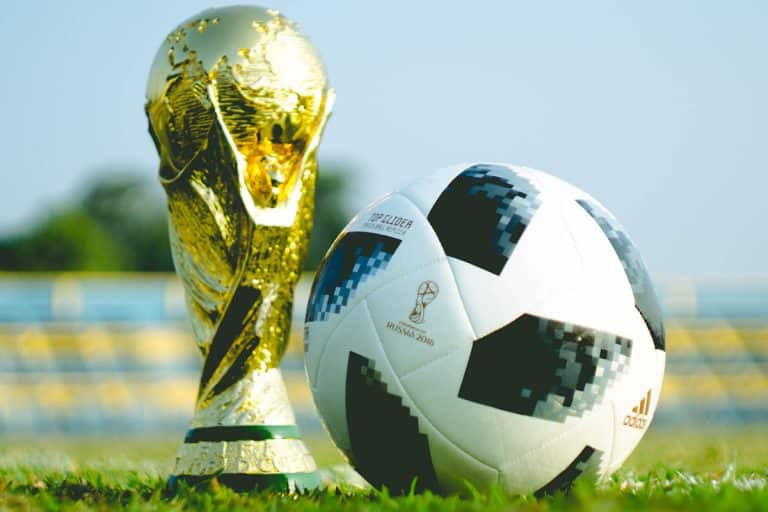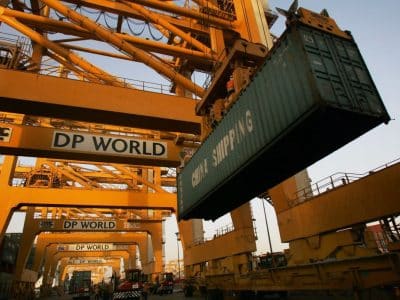Ever looked closely at a World Cup football?
During the first few tournaments, the famed soccer ball would be stitched up by hand, however, given the evolution of technology, recent soccer balls are made with cutting-edge 3D technology, making it lighter and faster that its predecessors. Not to mention, the recent versions are made with sustainability in mind.
With only a week more for FIFA World Cup 2022 Qatar to kick off, here is a look at all the soccer balls ever since the first tournament.
All pictures are credited to Hungarian professional photographer Peter Pesti.
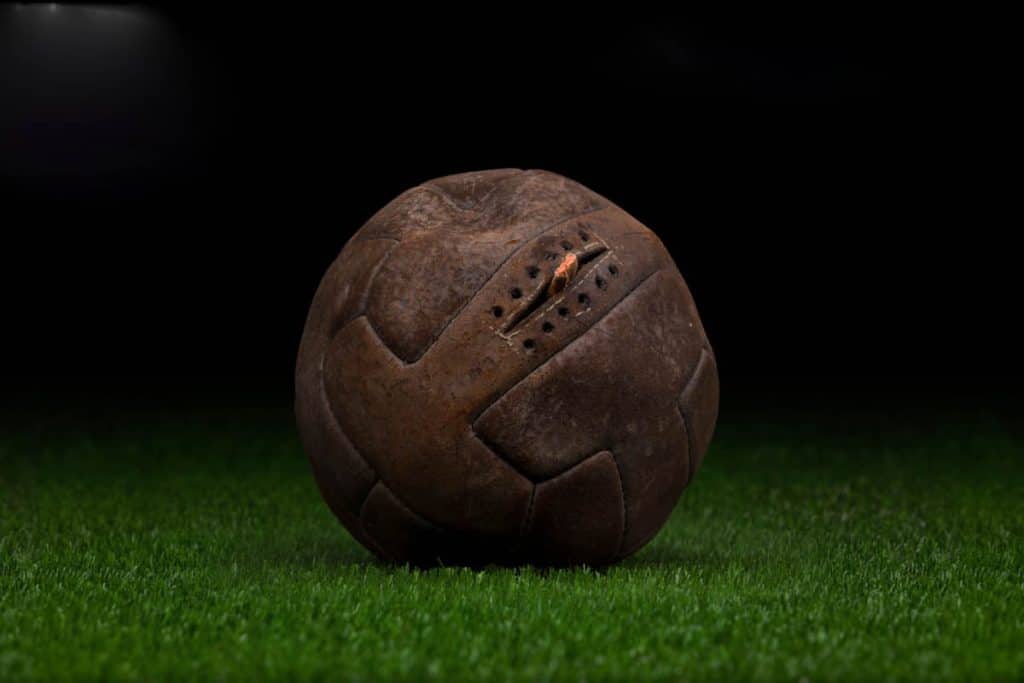
The 1930 World Cup was the first World Cup organised by FIFA but it was not the first international soccer tournament. The greatest football nations could compete during the Olympic Games even before the first FIFA World Cup. The balls used in the 1930 World Cup therefore originated from the Olympic Games and also from the national football championships. This means that no new balls were introduced for the first World Cup.
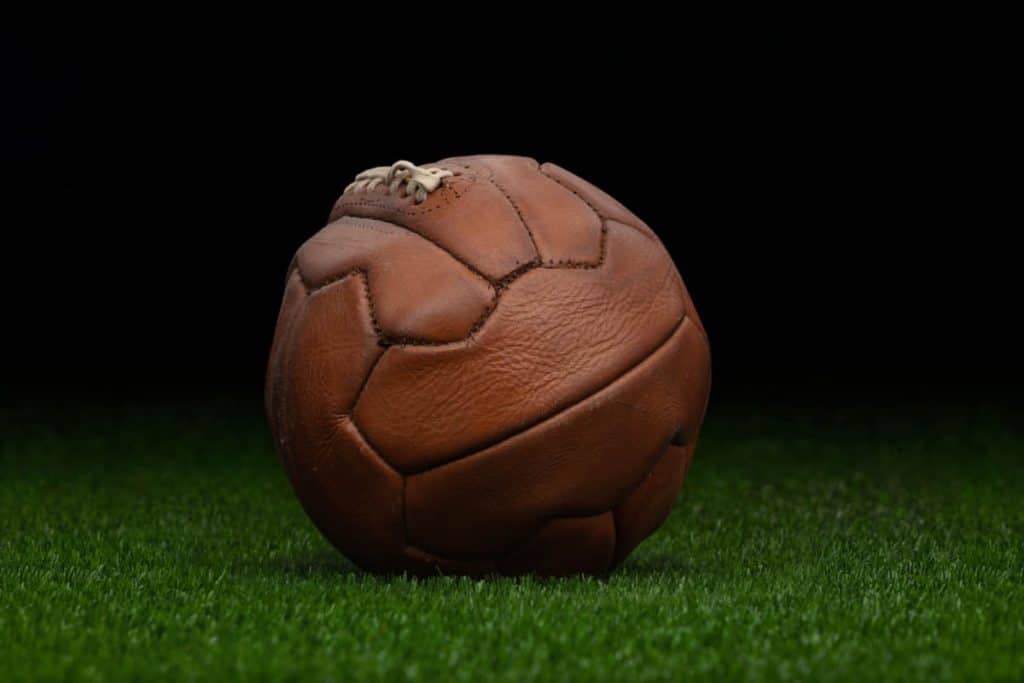
As the second World Cup was approaching, the fascist regime of Mussolini became so powerful that Italy was chosen to be the host of the 1934 FIFA World Cup. The strong nationalism requested that the balls used in the tournament had to be produced in Italy. In the beginning of the 20th century the majority of footballs were made in Britain and were exported to different countries where football became more and more popular and equipment was badly needed. But as previously mentioned, the Italian political power insisted on using Italian made balls for the first World Cup to be hosted in Europe.
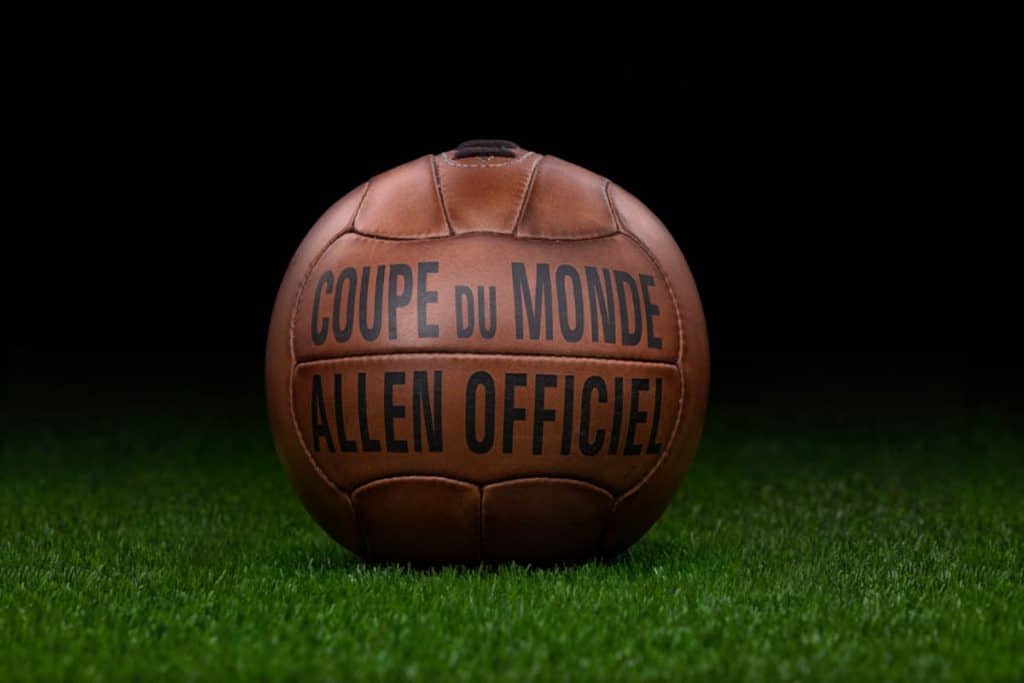
As we could see at the 1934 World Cup, the host nation Italy supplied the official balls for the tournament and this practice did not change in the 1938 FIFA World Cup, either. There was a French company called Allen who had already produced footballs for the French Cup competitions and other international meetings in the 1920s, therefore this Paris-based company became the supplier of the official footballs for the French World Cup as well. Allen supplied balls even as far back as for the 1924 Olympic Games.
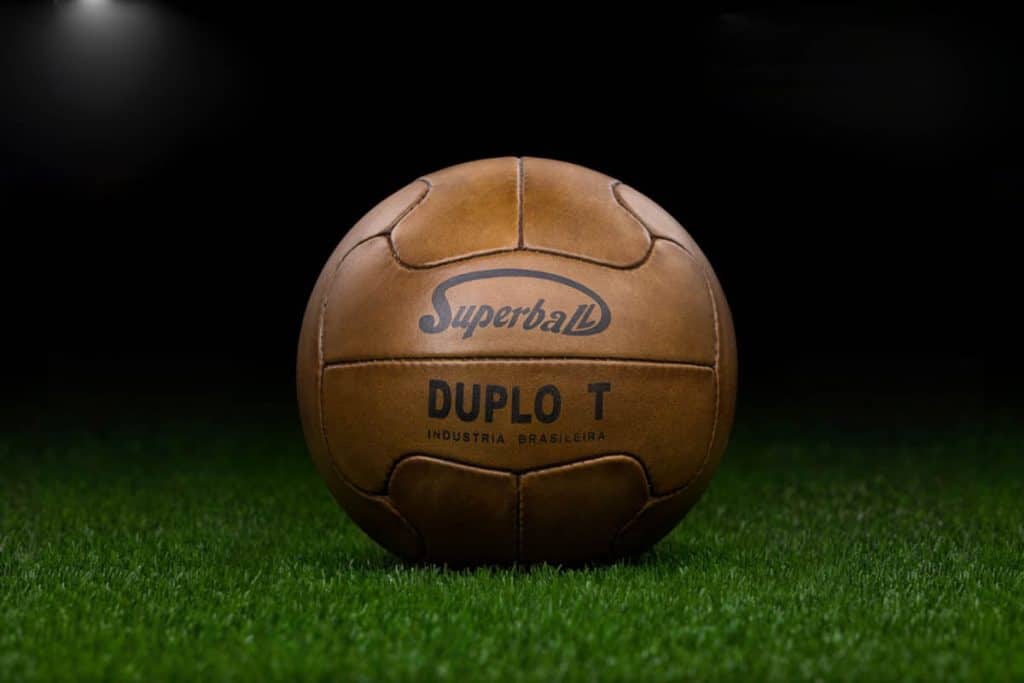
As we saw in the first three World Cups, all the balls used in the tournaments had laces and had to be inflated by skilled men. The sphericity of these balls depended on the expertise of these people but even when they inflated the balls, they could never be perfectly round due to their construction. Another disadvantage of these balls with laces were the injuries to the players caused by headers. So it was only a question of time before the classic footballs with laces evolved.
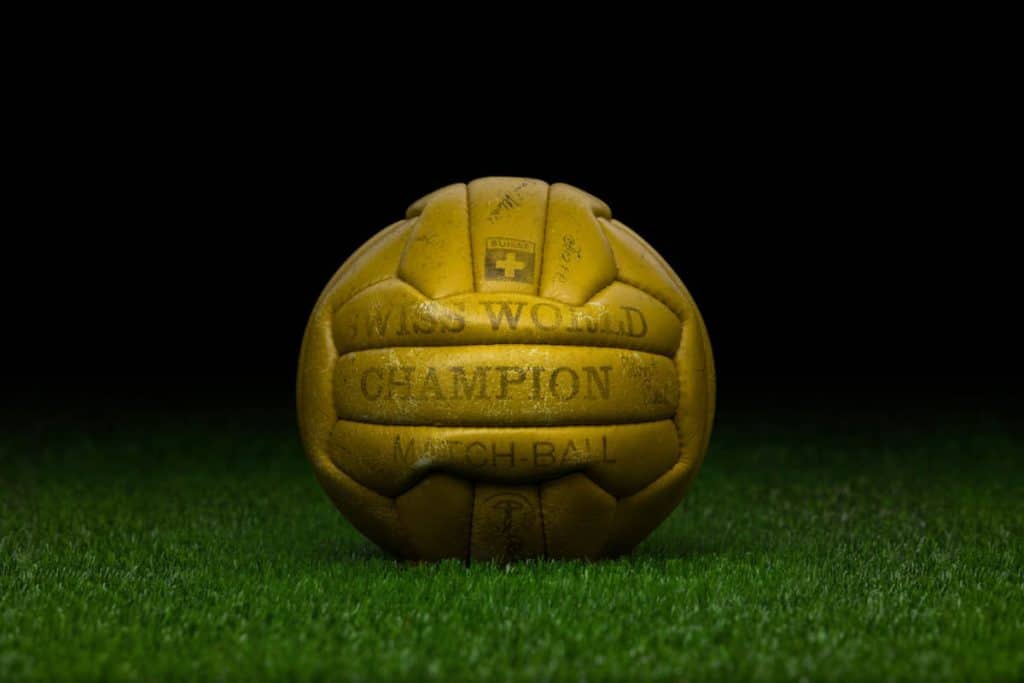
The 1954 FIFA World Cup was the first World Cup in Europe after the Second World War. Switzerland was chosen to be the host nation since it had not been damaged from the war and had the best available infrastructure among other possible European host countries. As usual since 1934, the official supplier of the balls came from the host country.
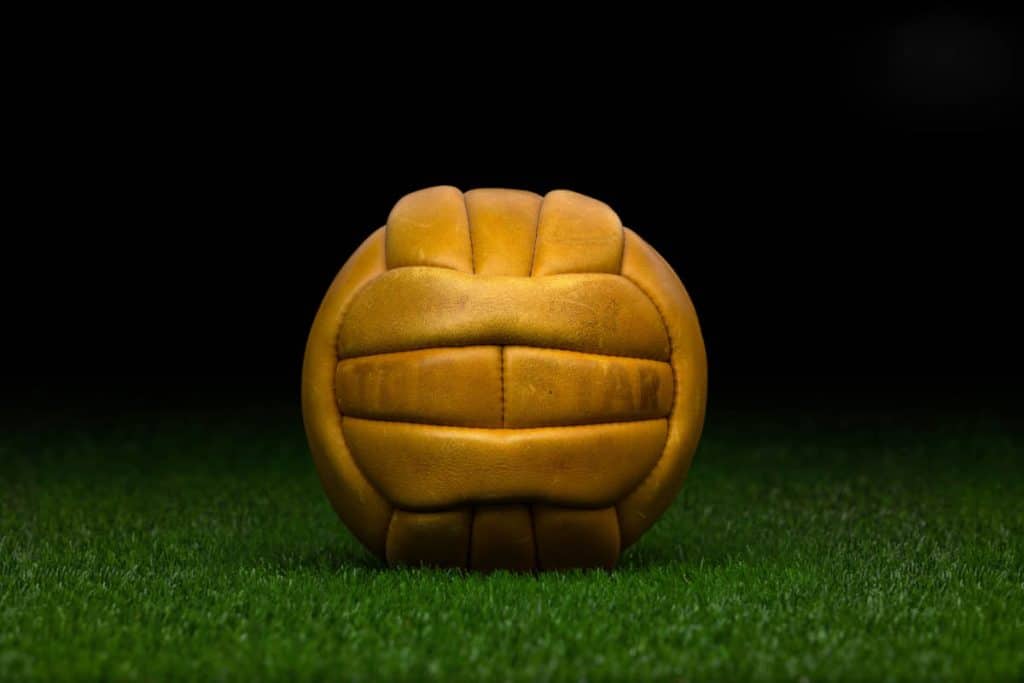
The Top Star ball had a popular design, it was similar to the balls of the time, however, on this ball there were long and sort panels, elegantly alternated between them: two short panels in the midst of two long panels and the inflation valve was in the centre of one short panel. This ball brought technological developments as well, these leather balls were treated with a waterproofing wax, making the balls more water resistant. The balls used in the 1958 World Cup were yellow, light brown or white. In matches when it was rainy or a little wet (just like in the final between Brazil and Sweden) the white ones were used.
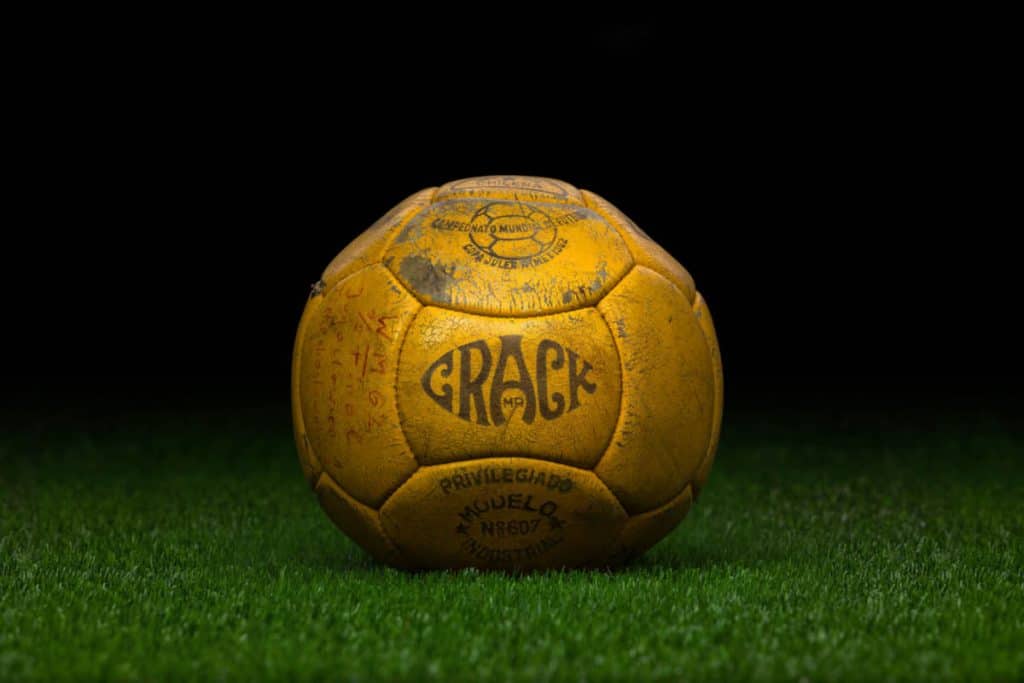
In all World Cups prior to 1970, the national association of the host country always requested from local suppliers sample balls which were tested and approved by the organising committee, as well as by the referee committee. From this process one ball was determined to be the match ball for the tournament. In most cases the manufacturer delivered the appropriate number of balls free of charge to the association.
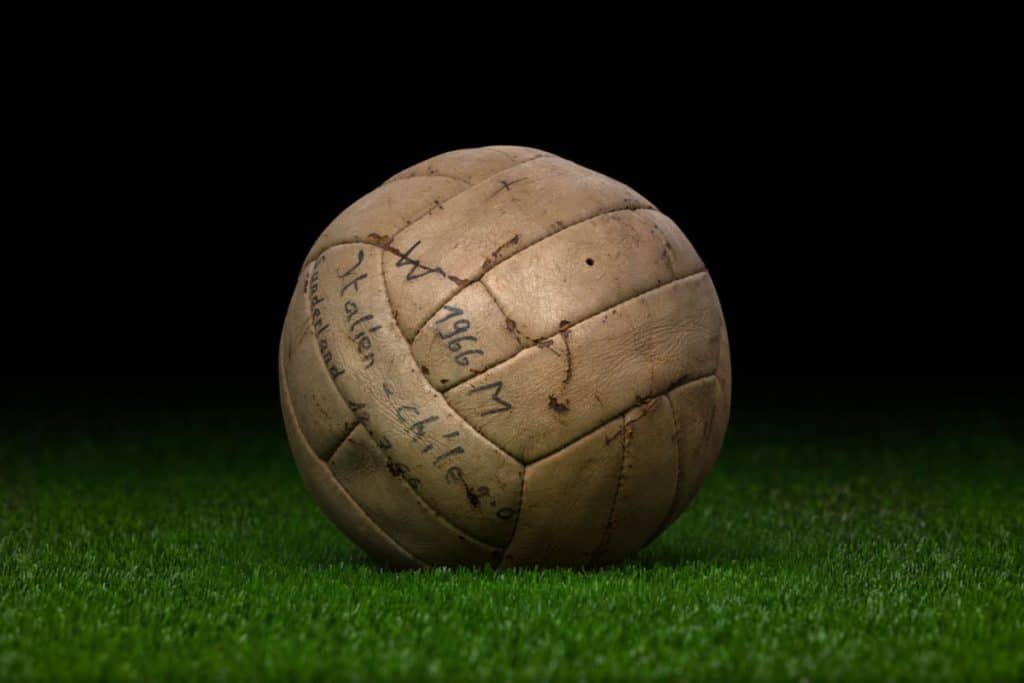
The official ball for the 1966 World Cup was called Challenge 4-stars. It was manufactured by Slazenger (at the time operating in England and now in Australia – although the present company doesn’t produce football equipment any longer). The Challenge 4-stars was a ball with high quality leather and entirely hand sewn. It was composed of 25 rectangular panels, joined together in a way that was very similar to the 1958 ball and which differed only in the panel which contained the valve. In the Slazenger ball the valve was in the centre of a small panel between two other (even shorter) panels.

The German brand Adidas, founded by Bavarian Adolf (Adi) Dassler, was already famous for its excellent shoes, now adopted by Europe’s most prestigious football teams: the black Adidas boots with the famous three white stripes. Before devoting himself fully to football, Dassler provided running shoes to the black American sprinter Jesse Owens, Olympic hero of Berlin in 1936. In the post war era, he manufactured legendary football boots with cleats for the German national team, which had a crucial share of the German victory over Hungary in 1954 on a rainy pitch and West Germany became World Champions for the first time in Adidas boots.
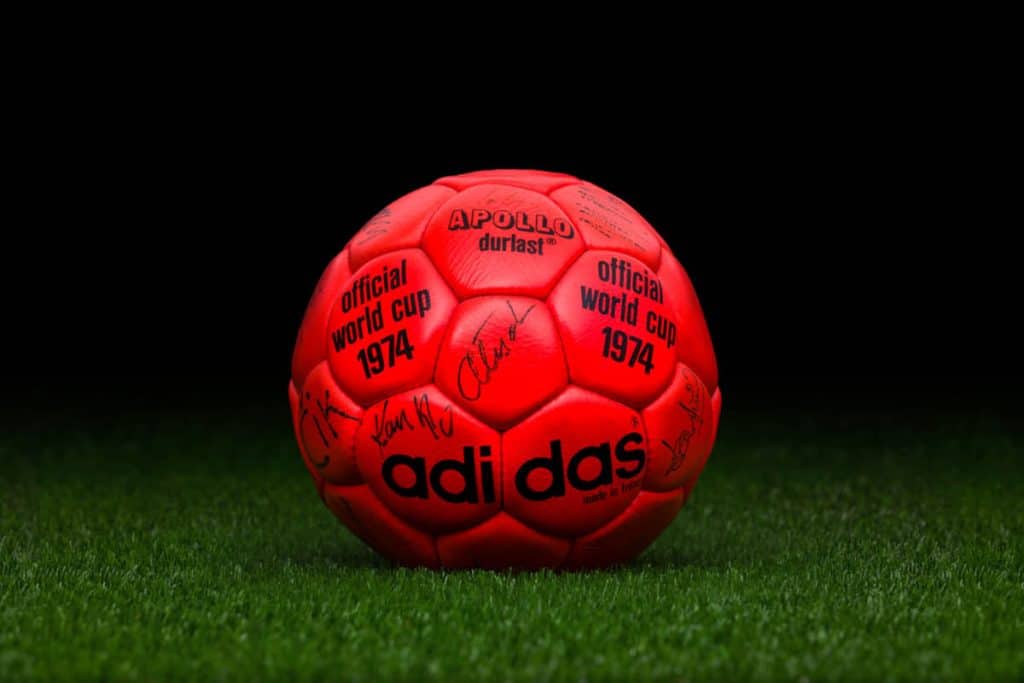
The 32-panel model used in 1970 was so successful that there was no reason to introduce a brand new ball, so both the design and the name remained the same. However, the Durlast coating on the official ball of the 1974 World Cup became thicker, which was accompanied by an increase in water repellency, the weight of the ball increased less during rainy matches. Another innovation is that the balls have a black inscription, which proved to be more durable than the previous gold text, which wore off sooner.
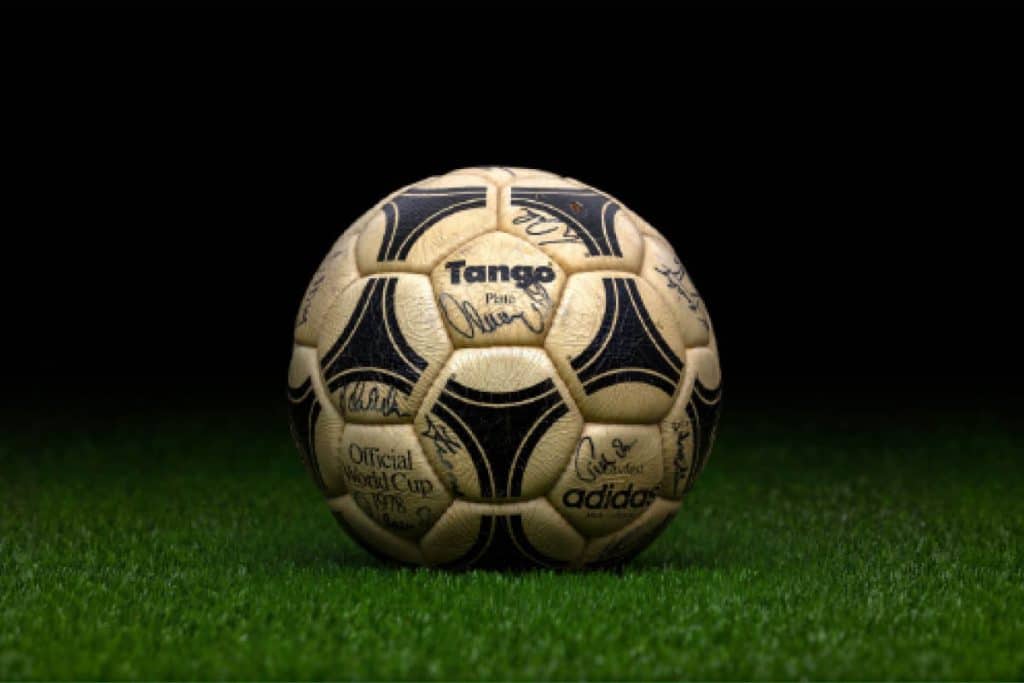
The 1978 World Cup came back to America, being hosted by Argentina. In respect of the official ball, this edition represented a great milestone, because Adidas launched a model with a revolutionary design: The Tango – inspired by the classic dance of Argentina. This ball was identically constructed to the previous World Cup ball, the Telstar from 1974. It was composed of 32 hand sewn leather panels (20 hexagonal and 12 pentagonal) and covered by the Durlast coating (applied with the same thickness of the 1974 Telstar) to make the ball more resistant and waterproof. When the ball was rotating, a stunning effect was created by the black circles, which was visually very attractive.
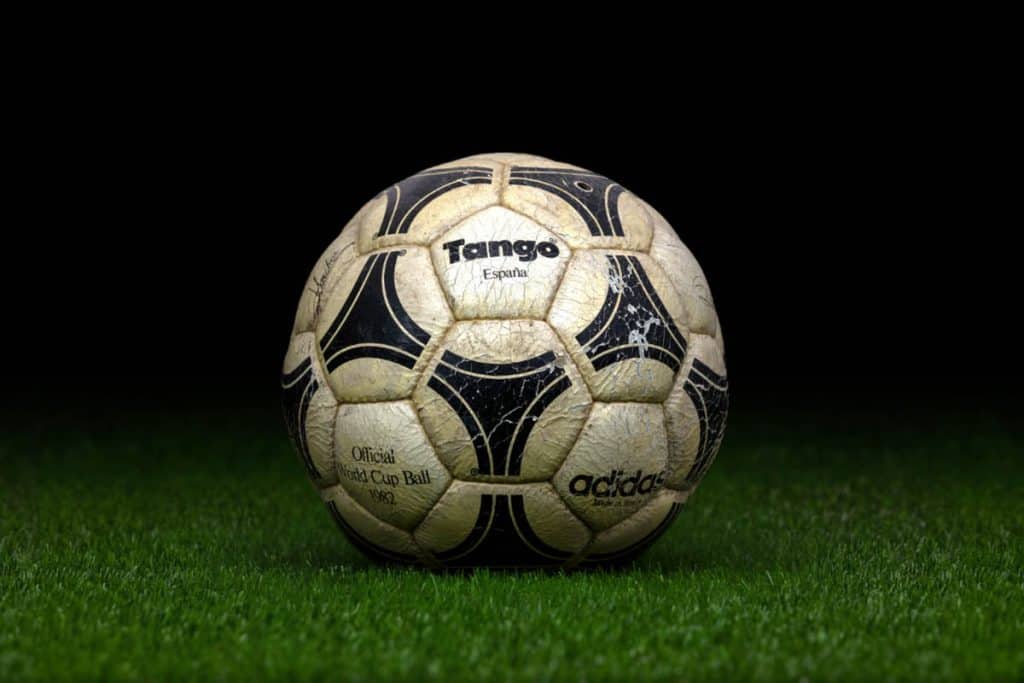
Due to the indisputable success of the Tango in the 1978 World Cup and the 1980 Euro Cup, Adidas did not design and produce a revolutionary new ball for the Spanish World Cup. Instead they made a ball called Tango España, with only minor changes from its predecessors. This ball was the first Adidas World Cup ball to be named inspired by the host country. The ball was almost identical to the previous Tango. It was once again composed of 32 hand sewn panels, with the same black and white Tango design: the curved triangles were printed on every hexagon, which formed circles around the 12 pentagonal panels, giving the ball a great visual illusion of 12 identical circles.
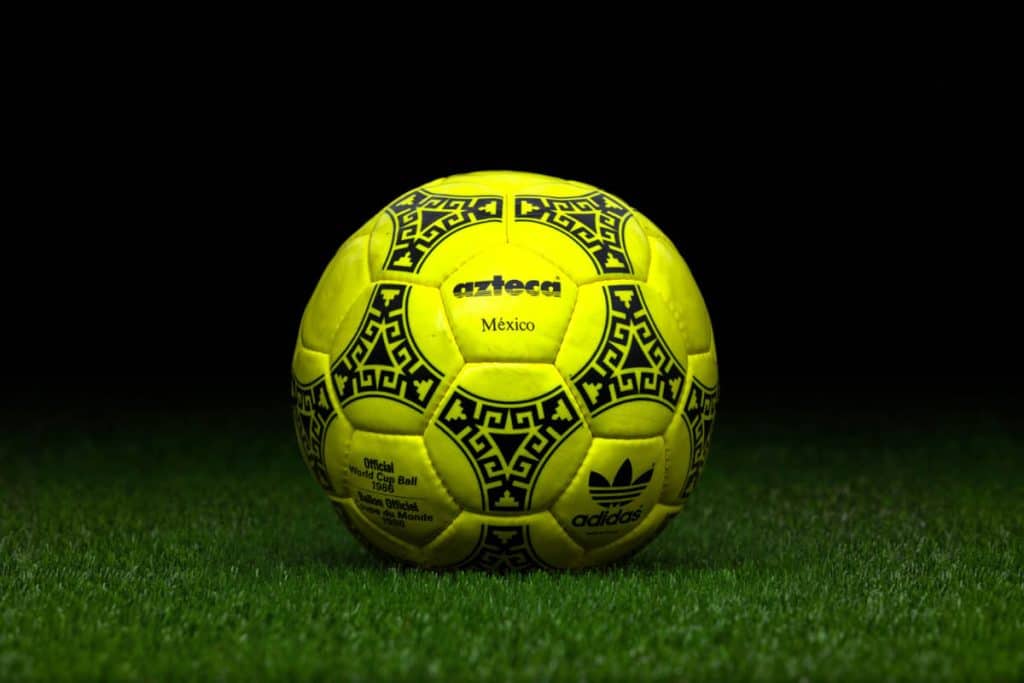
The official match ball of the 1986 FIFA World Cup was called Adidas Azteca México. Just like in case of the previous World Cup ball (the Tango España), Adidas went on using an appellation related to the host country. The Azteca was the first ball to have a renewed and (which is even more important) an elaborated Tango panel – decorated by Mexico’s native Aztec architecture and murals (designed by Rebecca Martinez). So overall we can say that the Adidas Azteca México was the first World Cup ball to be named and decorated completely in honour of the host nation. Ever since, Adidas have kept this practice for all of the following World Cup balls.
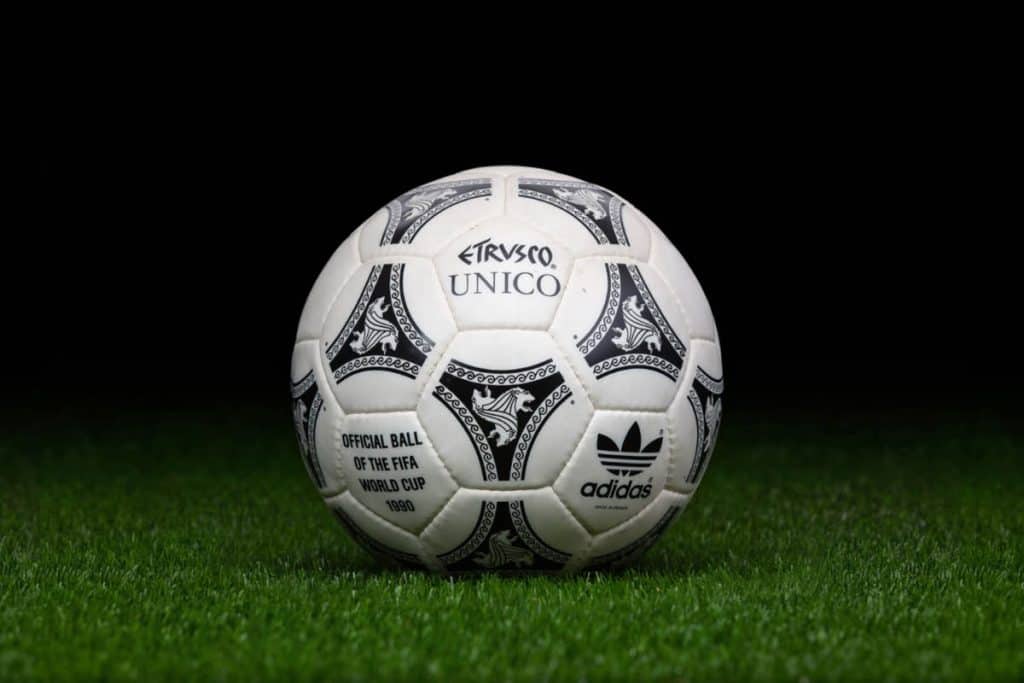
In 1990, Adidas continued the tradition of naming the World Cup ball in honour of the host country. Etrusco Unico commemorates the ancient Etruscan civilisation and art, dating back to the 9th century BC and flourished in the Apennine Peninsula, in today’s Italy. The inscription Etrusco is written on the ball in ancient Greek style, while Unico is written in the usual Latin letters. The Tango motif was left on this ball as well, and here three Etruscan-style lion heads were placed on it.
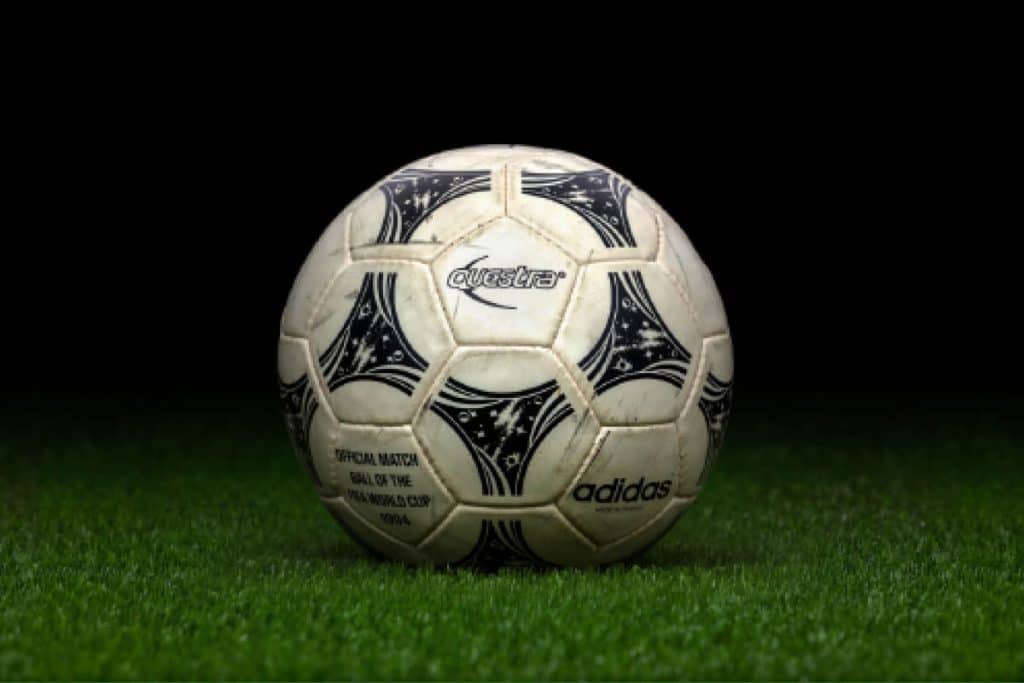
At the 1990 World Cup in Italy, a negative World Cup record was set in terms of goals (2.21 goals/match), so many blamed the ball. Before the next World Cup, FIFA asked Adidas to develop a ball that could score more goals. The 1994 World Cup was brought to the USA in part to promote soccer, but if viewers don’t see enough goals, they tune out of the games on TV and think soccer is a boring sport. The changes to the ball were successful, as the American World Cup had a higher goal average (2.7 goals/match), which they have not been able to surpass in any World Cup since then.
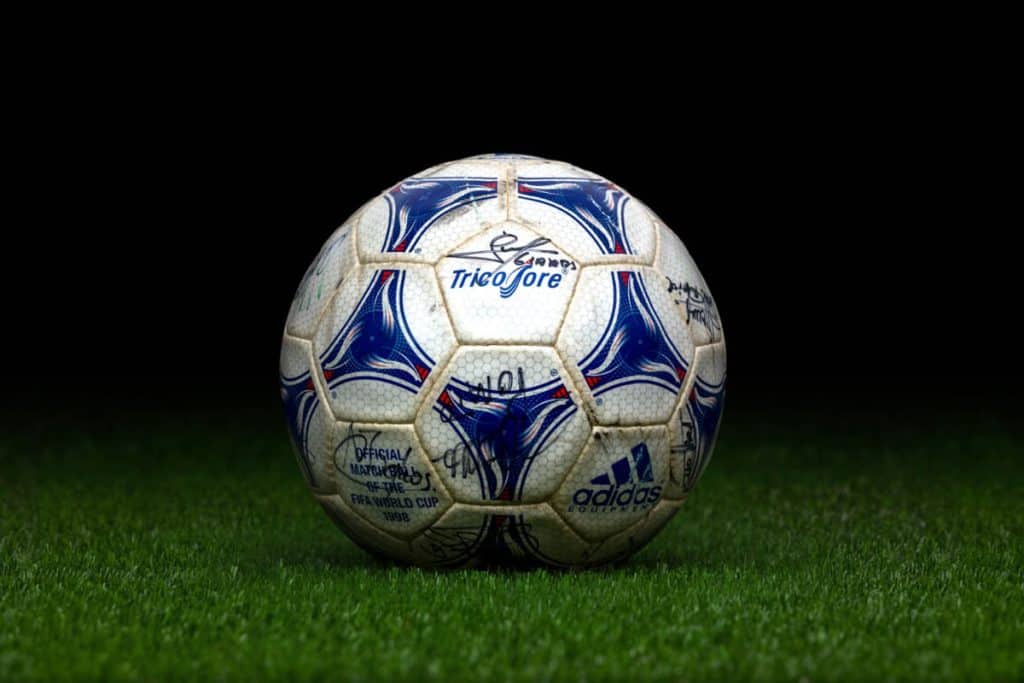
Many people believe that the Tricolore was the first coloured Adidas ball produced for major tournaments, but this is not true: in 1996, coloured balls were already used at the European Championships (Adidas Questra Europa) and the Olympics (Adidas Questra Olympia). So the statement is only correct like this: the Tricolore was the first coloured Adidas World Cup ball. But this is not the only reason why the Tricolore has become an eternally defining ball. After all, this was the last World Cup ball since 1978 with the Tango design.
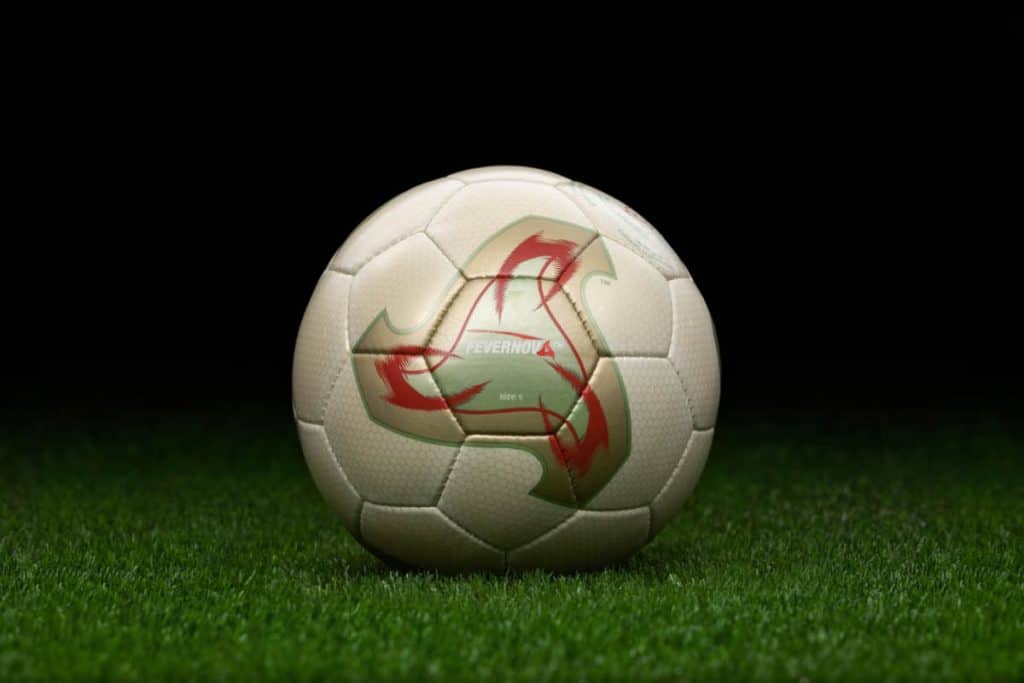
Adidas Fevernova has written itself into football history in several ways. It was the first ball since 1978 not to be decorated with the Tango design. Furthermore, it was the last 32-panel ball (Adidas has used this panel structure in nine World Cups since 1970). But the Fevernova was also the last hand-stitched ball in the history of the World Cup. The official match ball of the next World Cup (Adidas Teamgeist) was already produced from glued panels, and this practice has remained ever since. Almost every manufacturer in the world’s ball production has adopted Adidas’ innovation, which was introduced at the 2004 European Championship in the case of the Adidas Roteiro being the first thermal bonded ball ever.
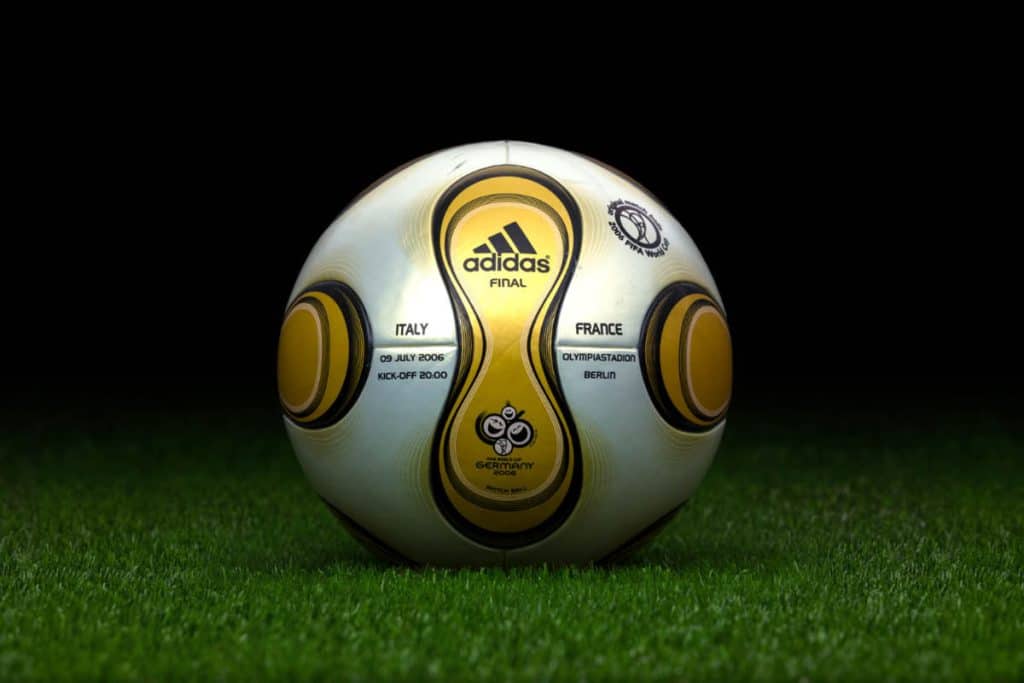
By creating the Teamgeist ball, Adidas opened a new chapter in the history of World Cup balls. This was the first ball whose panels were not sewn by hand, but glued together. This was a revolutionary innovation in ball production, but Adidas had already introduced the technology two years earlier, at the 2004 European Championship in Portugal, in the case of the Roteiro.
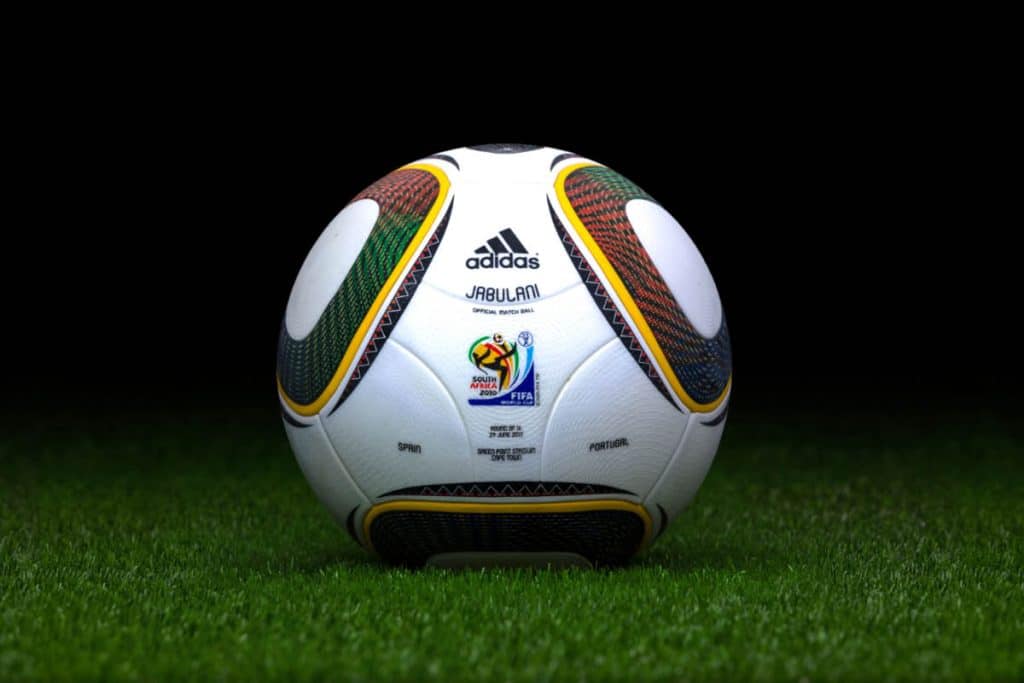
On December 4th 2009, Adidas presented the official 2010 World Cup ball: the Jabulani. This word means celebration or party in the Zulu dialect. The Jabulani was presented as a technological jewel, created by the A.I.T. (Adidas Innovative Team). It consisted of eight innovative welded panels, 4 minor triangles and 4 bigger ones, which gave the ball a perfect spherical shape never before achieved. The panel surface was a 3D non-slip compound called Grip and Groove, or commonly known as goose skin. It had already been successfully tested in the 2008 European Championship. This type of surface allowed an optimal grip on all conditions. The panels were crossed by particular channels, which ensured the designers an improvement in the aerodynamics of the ball. Eleven different colours were adopted to compose the decorations on the Jabulani.
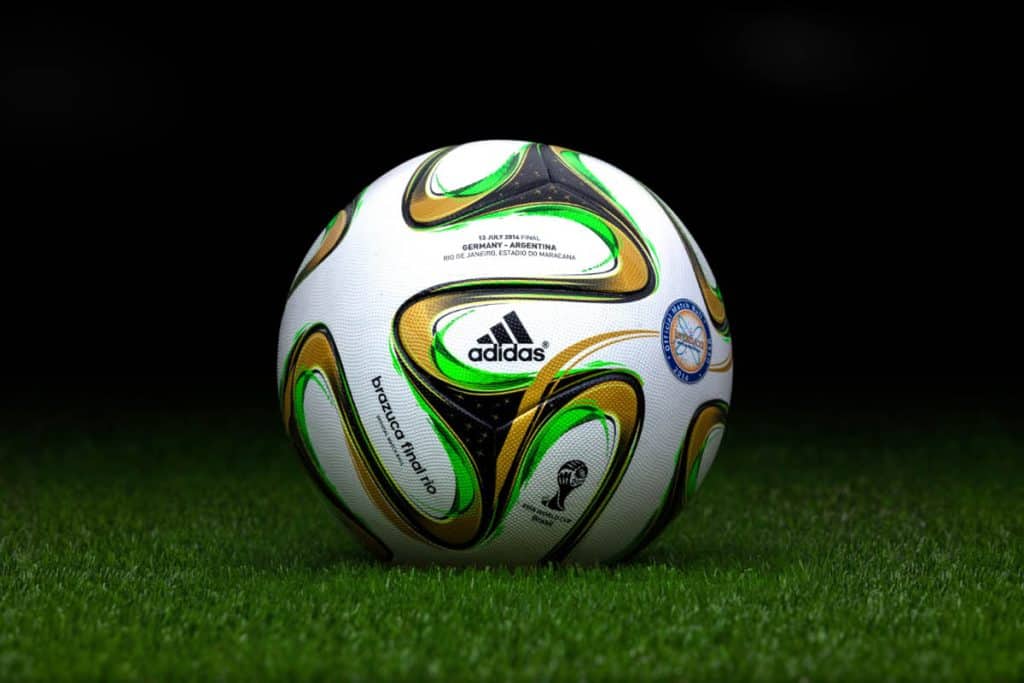
Adidas officially presented the Brazuca on the 4th December, 2014. The ball was revealed with a spectacular 3D light projection launch event held at the iconic Parque Lage in Rio de Janeiro. The Brazuca was named back in September 2012 following a public vote in Brazil involving 1 million football fans; the name Brazuca is an informal local term which means Brazilian, or to describe the Brazilian way of life. The colours and ribbon design of the ball panels symbolise the traditional multi-coloured wish bracelets worn in the country (fita do Senhor do Bonfim da Bahia), in addition to reflecting the vibrancy and fun associated with football in Brazil.
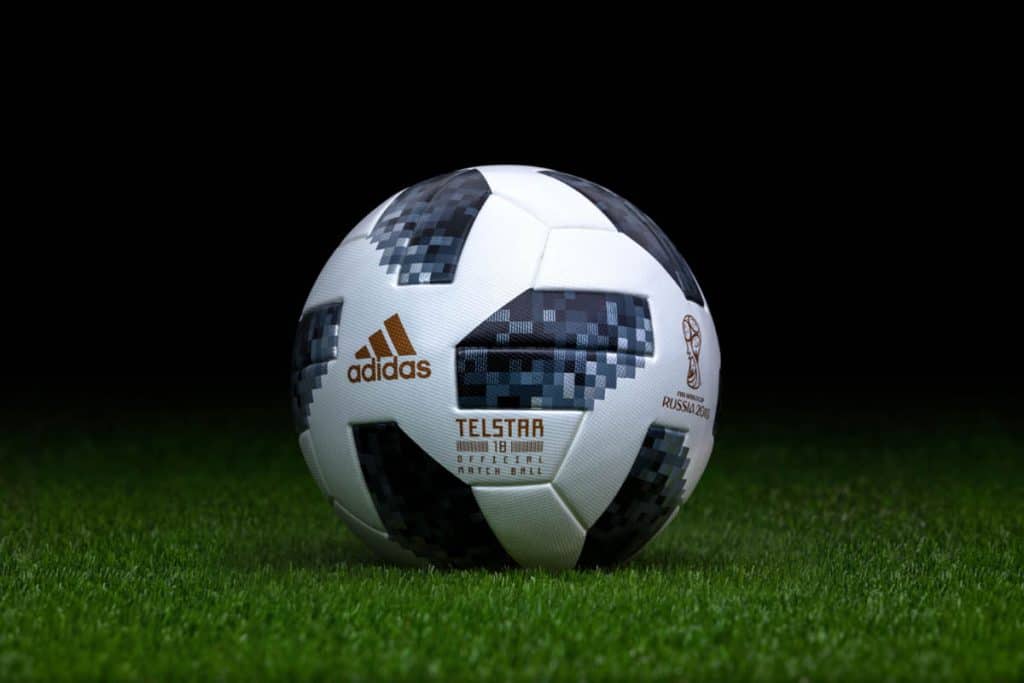
In the case of the Tango 12 (the official match ball of the 2012 UEFA Euro Cup), we have already seen an example of Adidas bringing back a well-established name from the past. At the World Cup in Russia, in addition to the 1970 Telstar name, the black and white colour scheme returned, so a retro-style ball was made. The name refers to the Telstar communications satellite and the television star. The six panels used on the Brazuca are still retained, but this time in a square shape. As an innovation, among other things, an NFC chip has been added to the ball (it is also marked on it), which allows you to read the data from the ball using a mobile phone, i.e. the data of the matches played with such a ball (teams, location, final result, etc). As a step towards sustainability and environmental protection, the packaging of the ball has also become simpler, as it is made of reusable paper.
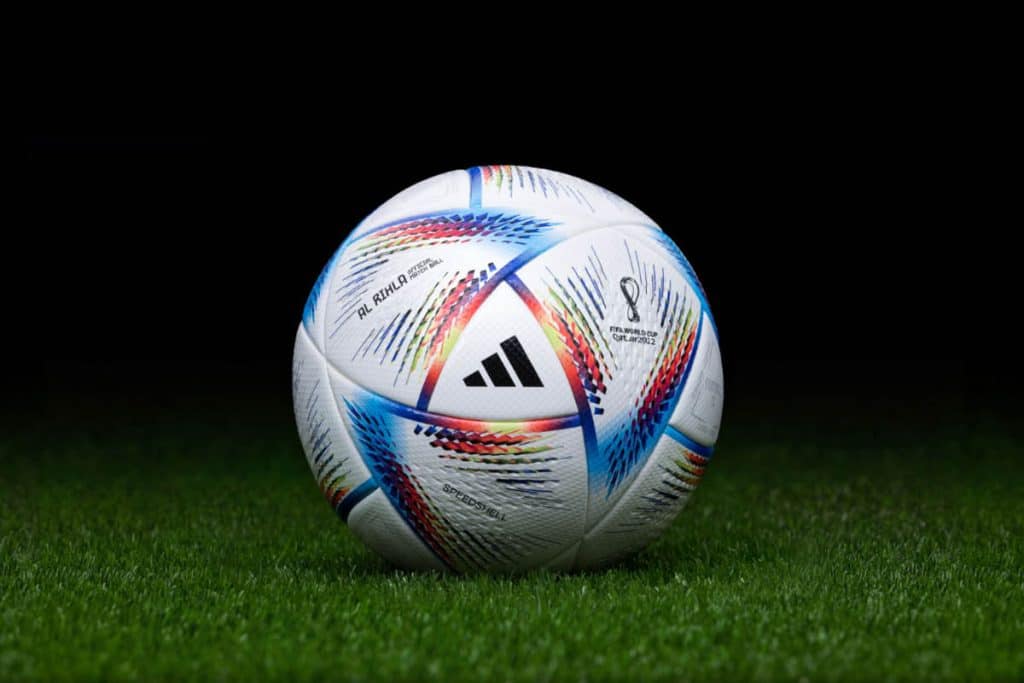
Al Rihla is the most expensive World Cup ball ever, in which technological innovations play a significant role. The number of panels increased from six to twenty, which is a strange decision, because Adidas significantly reduced the number of panels in the balls from the usual 32 with the introduction of Teamgeist developed for the 2006 World Cup (2006: 14 panels, 2010: 8 panels, 2014: 6 panels and 2018: 6 panels), which is justified by the fact that the size of the panels increases and the players are less likely to hit the joints, which could potentially change the controllability of the ball. Al Rihla’s panels are rhombus or triangular, the latter referring to the sand dunes. The design is inspired by the desert, Qatari architecture, iconic ships and the country’s distinctive flag.



